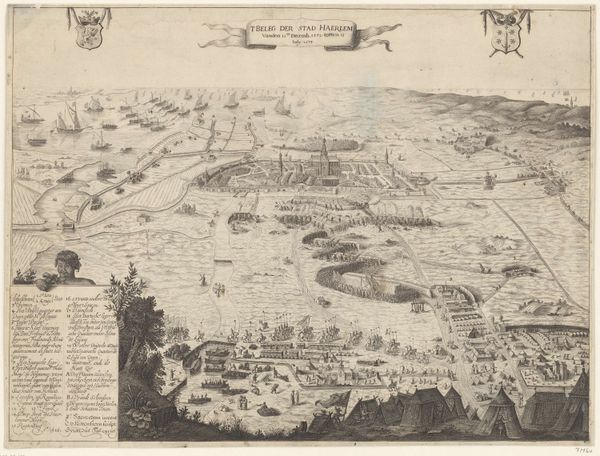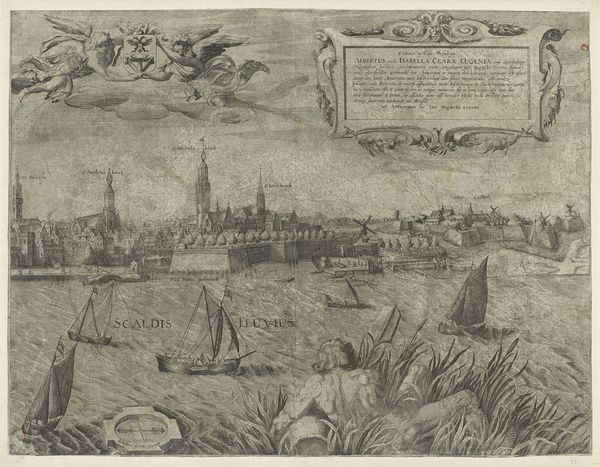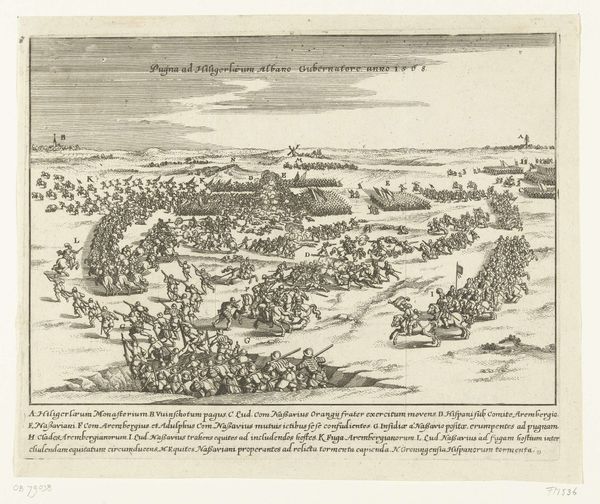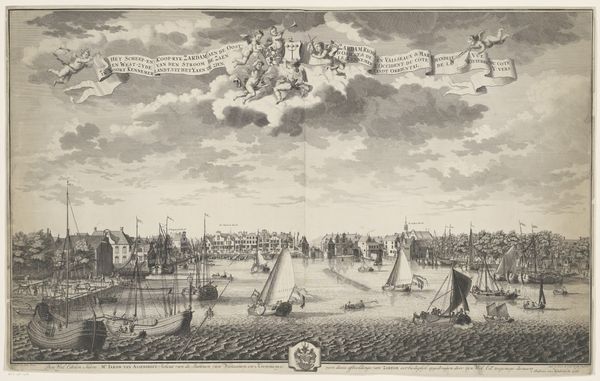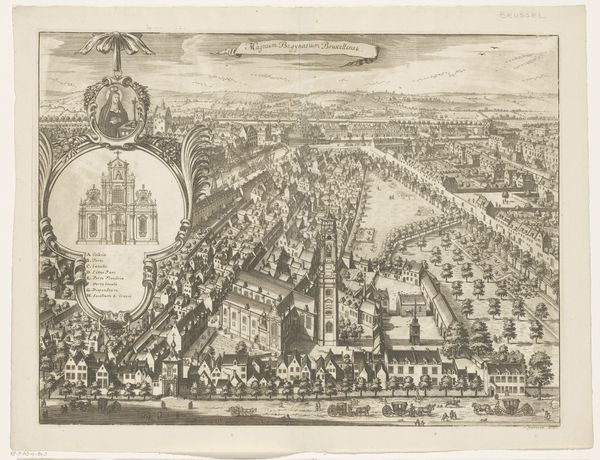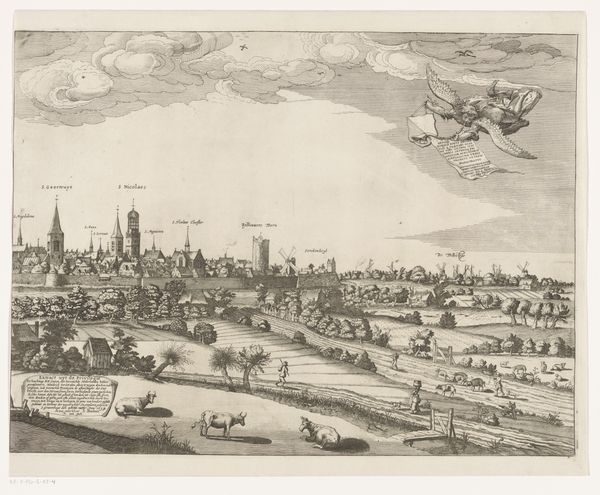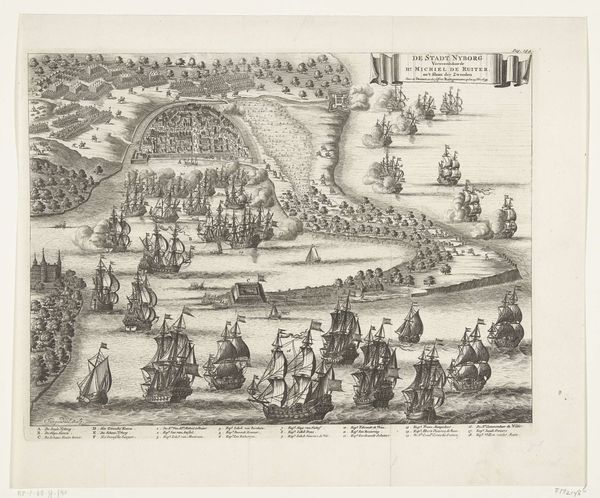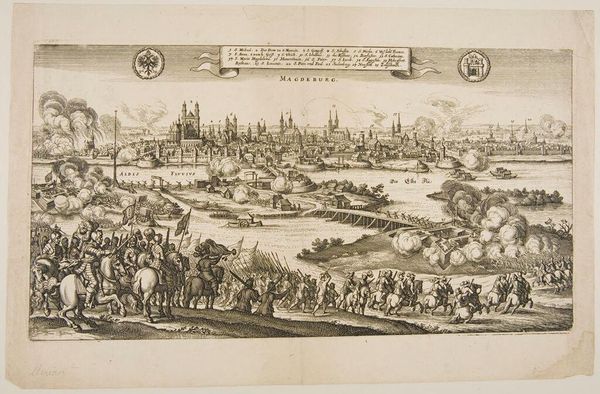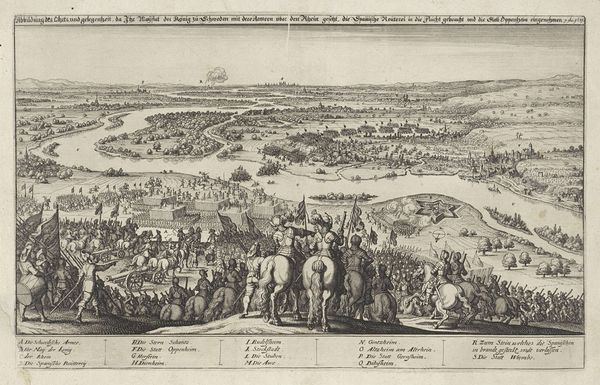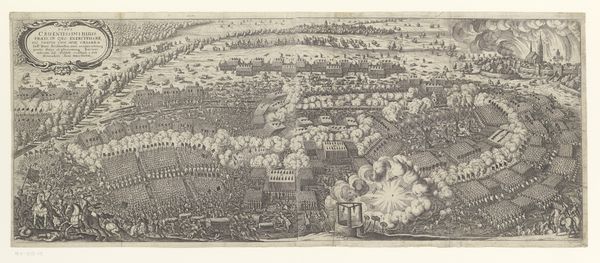
De vloot van de prins in de haven van Hellevoetsluis, 1688 Possibly 1688
0:00
0:00
drawing, print, ink, engraving
#
drawing
#
baroque
# print
#
landscape
#
ink
#
cityscape
#
genre-painting
#
engraving
Dimensions: height 377 mm, width 562 mm
Copyright: Rijks Museum: Open Domain
Curator: Ah, here we have "The Fleet of the Prince in the Harbour of Hellevoetsluis, 1688" a detailed engraving and ink drawing attributed to Daniël Marot. Editor: It’s striking how meticulously the artist renders the scene, yet the overall effect is strangely... flat. Almost as if detail itself is suppressing depth. Curator: That "flatness," as you call it, is critical. Note how Marot employs linear perspective to organize the multitude of ships. The composition isn’t merely representational; it’s symbolic. It conveys a sense of order and the might of the Dutch fleet in that specific historical moment. Editor: And what a moment it must have been! This likely commemorates William of Orange's departure for England and the Glorious Revolution. Hellevoetsluis must have been teeming with anticipation, strategizing, all of that. You can almost feel the hum of the city preparing for such an important naval deployment. Curator: Precisely. See how the ships dominate the composition and seem to crowd the harbor and compress all the participants in this drama. The use of engraving lends the image a documentary feel, but with some ornate, theatrical touches to the composition with a nod to baroque aesthetics. Editor: The strategic choice of medium reinforces its intended purpose. Engravings such as this were often circulated to propagate specific political messages, reaching a broad public with impressive visuals. Look at those fronds! They almost look like decorations for a celebration. Curator: Also, don't forget the inclusion of an angelic coat of arms as an element which almost predicts or ordains the endeavor as holy or blessed in its historical significance. Editor: Absolutely. Every aspect of the visual field has the purpose of projecting and justifying power through careful composition and symbols, giving it a divine alibi of some kind. Fascinating how it manages to operate as both history and propaganda at once. Curator: Exactly! Focusing on the structure, Marot utilizes every graphic tool at his disposal to create a complex, deeply layered, persuasive scene, giving us insights into Dutch baroque and graphic conventions. Editor: Looking at Marot's approach to portraying naval strength from this historic point, it's striking to think how such images played a crucial role in shaping national identity, both for the Dutch Republic, and in the broader political theatre of the era. Curator: Indeed, seeing the detail up close allows us to observe how every choice functions almost like a symbolic language reinforcing narratives of nation, divine right, and martial prowess. Editor: Analyzing the layers through these approaches reveals new aspects within this seemingly straightforward depiction of Dutch naval power, doesn't it?
Comments
No comments
Be the first to comment and join the conversation on the ultimate creative platform.

